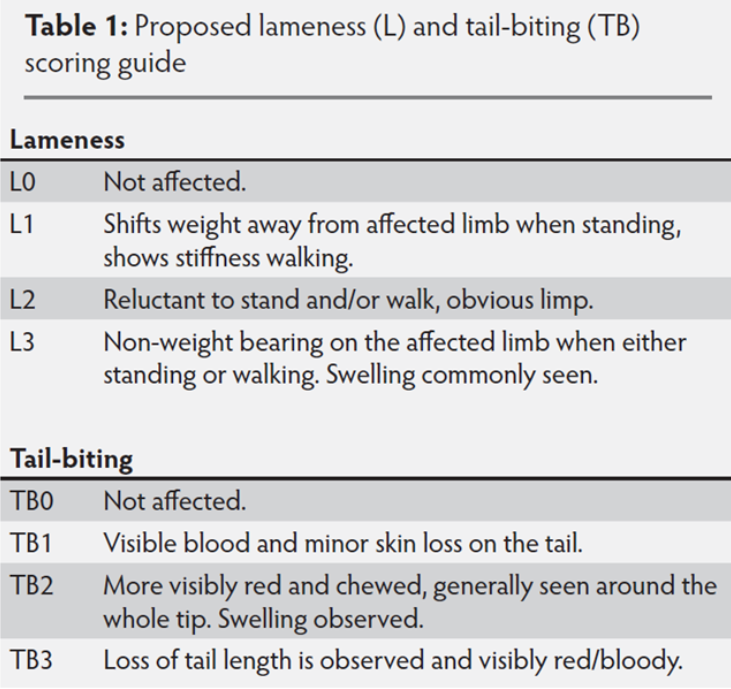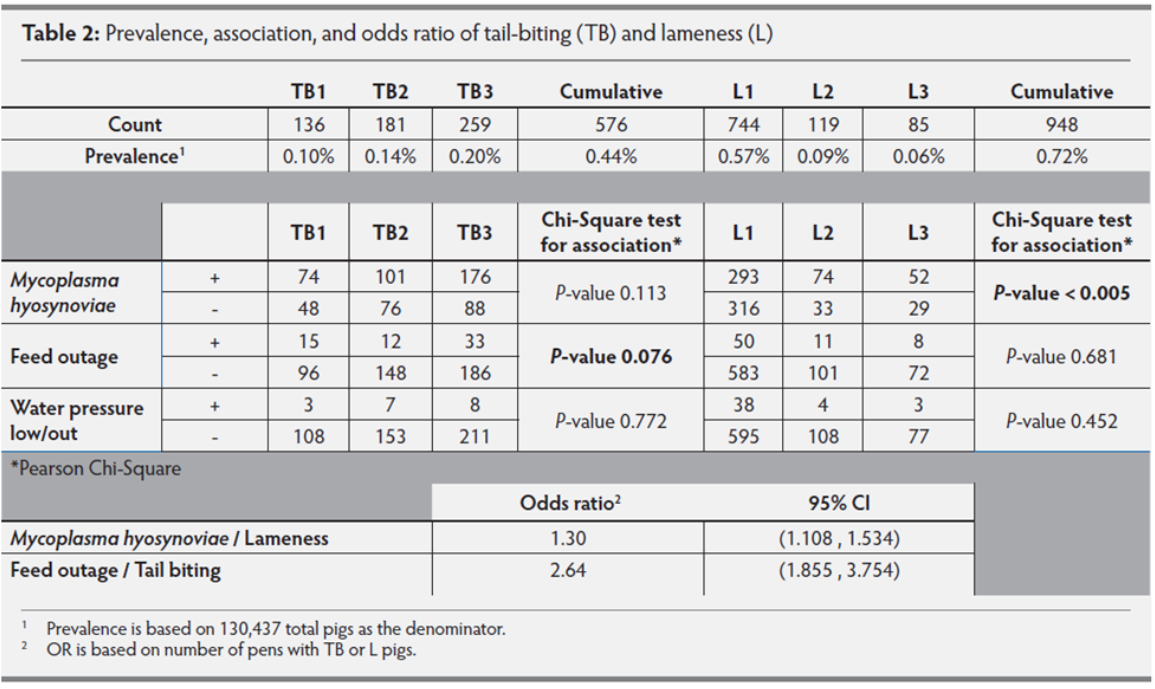



A simple scoring system can provide insights into tail biting and lameness
Tail biting and lameness directly impact the wellbeing of growing pigs, which in turn impacts their productivity and the farm’s economics.Tail biting remains confusing and frustrating for producers and veterinarians alike as they attempt to identify the risk factors and triggers within a group of pigs. Lameness tends to get attention in the breeding herd, but it is an increasing challenge in growing pigs where barn workers may not recognise or address the condition early enough.
“There is a disconnect between producers, their staff and swine veterinarians regarding prevalence, severity and causation of these issues,” Sam Baker, Iowa State University veterinary student, told Pig Health Today.
In a research project1, conducted in the summer of 2018, he set out to develop a simple scoring system to assess the tail-biting and lameness severity for use within groups of growing pigs. His secondary objective was to identify risk factors that may increase the incidence of tail biting and lameness.
Building the basics
The study took place within a single production system, thereby providing similar genetics, with pigs selected randomly from several sow sources. In all, 108 barns, 4,472 pens and 130,437 pigs were involved.
The observation period ran from 14 to 18 weeks post-weaning, based on when the barn staff tended to see the most tail-biting and lameness issues, Baker explained.
In developing the scoring system, Baker’s priority was to use common terminology, facilitate useful communication and ensure scoring consistency. He based both the tail-biting and lameness scores on a three-point scale as outlined in Table 1.

To ensure consistency, he was the only person to score the pigs. “I entered each pen in each barn, scoring every pig for tail biting and lameness,” Baker said. “This was followed by a risk-factor assessment, which involved checking feeders and recording water pressure, as well as collecting oral fluids.”
Two oral-fluid samples were collected in four pens per barn and tested for influenza-A virus and Mycoplasma hyosynoviae by polymerase chain reaction. Those pathogens were selected based on the herd veterinarian’s knowledge of health concerns. “If at least one oral-fluid sample from a barn tested positive, the entire group was considered positive,” Baker pointed out.
Calculating the odds
The total number of pigs with tail-biting issues was 576, for a prevalence rate of 0.44 percent; 948 pigs were recorded as lame, for a 0.72 percent prevalence. (See Table 2.)
“The take-home message is with these prevalence rates, a producer with a 2,400-head barn could see about 11 pigs lost to tail biting and 17 pigs lost due to lameness,” Baker said.
The risk factors that grabbed attention were Mycoplasma hyosynoviae and feed outages. The study summarised that a pig exposed to Mycoplasma hyosynoviae has 1.3 greater odds of having a lameness score of ≥1. As for tail biting, a pig encountering a feed outage is 2.64 times more likely to record a score of ≥1. “The risk is significant at the pen level,” he noted, “and is bordering on statistical significance.”

Close-out results
Baker used the data to generate a heat map to gain a visual distribution within the barns and showed that tail-biting scores of 1, 2 and 3 were recorded in each pen. “Interestingly, there seems to be a pattern where more pigs on the curtain side of the building had a higher frequency of tail biting than the fan side,” he said.
There was no pattern for lameness except that, in every barn, lameness 1 score was the most prevalent.
In evaluating the 35 group close-outs, Baker found that when the tail-biting score 1 was most prevalent, mortality averaged 9.9 percent; for score 2, the rate was 12.2 percent; and for score 3, it was 12.5 percent. Culling rates followed a similar pattern, averaging 2.1 percent, 2.8 percent and 2.9 percent respectively.
Baker acknowledged that a limitation to the study was that it was a single point in time and that further study is needed to learn more about the impact of Mycoplasma hyosynoviae and feed outages.
But, in the end, the scoring system can provide a common language for the producer, staff and veterinarian to communicate and a visual tool to diagnose the severity and prevalence of tail biting and lameness. “This may lead to earlier identification and response, which can improve animal welfare and production performance,” he said.
| References | ||||
|---|---|---|---|---|
| 1 Baker S, et al | ||||
| (2019) | Development of a scoring system to determine the prevalence, severity and associated risk factors of tail-biting and lameness.. Student Seminar, 50th American Association of Swine Veterinarians’ Annual Meeting | 103 |








